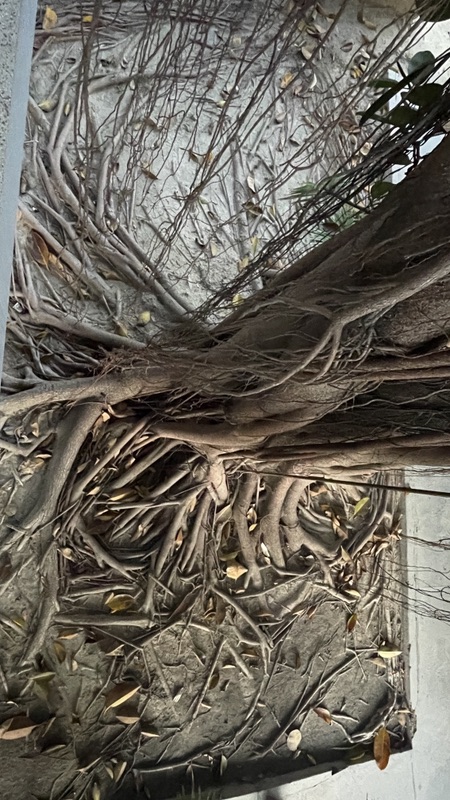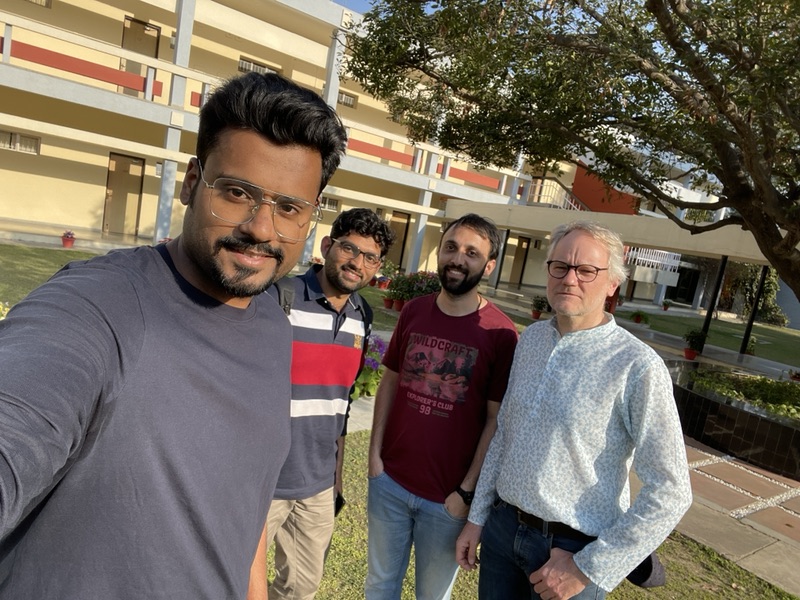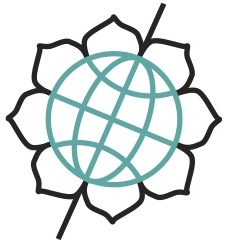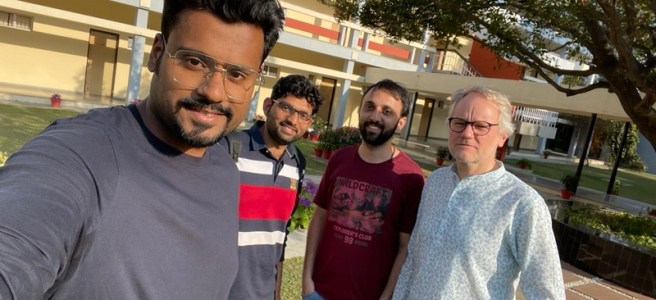Our next stop is at the IIT Kanpur, 400 km east of Delhi at the banks of the Ganges river. Time passes quickly. We spend time preparing lectures, meeting Saurabh – our future new PhD student – and participated in a workshop on sustainable cities. There, we had enlightening discussions on fractals, power laws, and how these relate to thermodynamics and can be applied to cities.
When we arrived in Kanpur by train in the evening, it was already dark outside. The transfer to the campus took another hour, there are just too many cars on too little space. And yes, it also is chaotic, with the occasional driver using the other side of the road for convenience. Looks like high entropy.

When we arrived at the visitor‘s hostel on campus, it is an oasis on peace and quietness in comparison to the normal world. We enjoy this quietness when we have a wonderful dinner at the guesthouse.

The next morning Tejasvi came over, and we discussed more thermodynamics. Particularly, we focused on the hydrologic cycle, and which processes actually dissipate and produce entropy, and which perform the work, and whether this all fits together in the context of the entropy budget of the hydrological cycle (going beyond our 2013 paper and the chapter of my book). Occasionally, we focused also on more practical aspects, like coordinating our lectures or logistics.
At lunch, Sarosh joined us, having just arrived from Aligarh. In the afternoon, we met with Saurabh – he studied at IIT Kanpur, and will join our group in April, just a few weeks away. He showed us the campus, having a central academic area surrounded by housing and sports facilities, and overall being just a very green place with lots of trees.
Later we met up with his MSc advisor, Prof. Indra Sen from the Earth science department, discussing our work and academic careers in India.

The next day we have the workshop, taking place at the National Aerosol Facility and organized by Prof Sachi Tripathi and Vinod Gaur. Vinod is a seismologist and retired professor and we share our fascination of and from inspiration of thermodynamics. He is a very kind person, very well connected, and so kindly arranged my past trips to India in 2019, 2023 and this year as well.
The workshop started with a presentation on a large project proposal by Sachi Tripathi on air quality, gas consumption and transport, linked with many measurements and artificial intelligence.
Tejasvi talked about metrics to measure the sustainability of the human-environment system, inspired by how natural ecosystems achieve sustainability. He discussed how social systems and natural systems interact with each other. Natural systems provide ecosystem services to social systems in the form of energy and matter, while social system perturb the natural systems by management interventions and also return their waste to them. Social systems can also reduce their dependence on natural systems by using renewable energy, recycling water, and maximizing food growth internally by techniques like vertical farming. From here one can delineate a metric of sustainability of such a system as its degree of dependence on the natural system.
My talk gave a brief overview of the thermodynamics of the Earth system, and how well limits predict the emergent state of the system. I then linked this to concepts of complex systems theory by showing that the dynamics of atmospheric convection can be represented by a logistic equation, a well-known approach uses in population dynamics. Instead of population size, the key variable is the free energy involved, that is, turbulent kinetic energy. One can then make the outcome of maximum power more specific by relating it to two contrasting feedbacks: one positive feedback on growth, and a negative feedback due to resource depletion. Maximum power is then achieved if both feedbacks have the same strength (I discussed this before in one chapter in my book a few years ago). And from here, it is not far to the logistic map, the Feigenbaum diagram, and fractals. And then this can be applied to cities as complex dissipative systems, while the surrounding rural landscape is the generating system that provides free energy in form of food to sustain the urban population.
Speaking of food, this was just in time for lunch back at the guesthouse, a break, and offline discussions before we reconvened in the afternoon.
This bridge from thermodynamics to fractals then provided a nice link to Vinod’s talk on fractals and how to measure these. He described them very well, giving a range of examples and outlining potential applications to properties of cities.
Last, Sarosh gave a pop-up talk on feedbacks in non-sustainable cities. He suggested that the strength of these feedbacks can serve as a useful metric to evaluate how far a city is from being sustainable.
This all was supplemented with very inspiring discussions on sustainability, cities, fractals, and thermodynamics. Although, at the end, it seemed that we all were quite tired and exhausted.
Then, time is up to depart again. I get up before sunrise to go for a run across campus. After half my round, I was no longer alone – A bunch of runners came from the right and I remembered, today is the IIT Kanpur 5k run.

After breakfast we left, had an uneventfully transfer to Lucknow airport where we arrived well in time before our flight.

